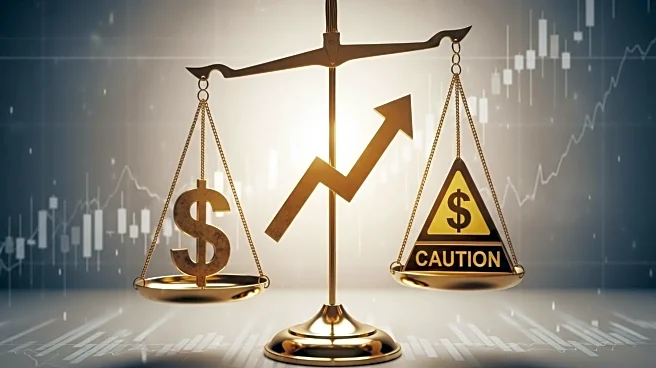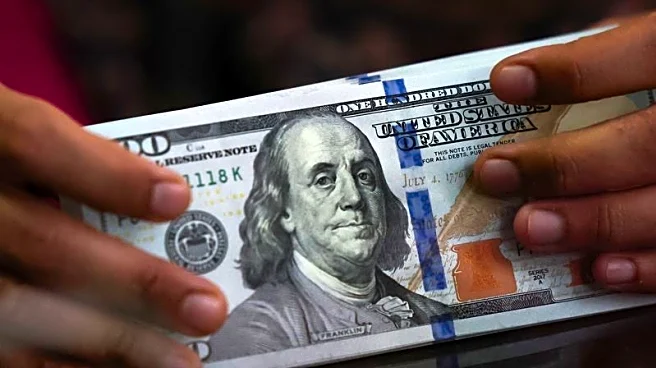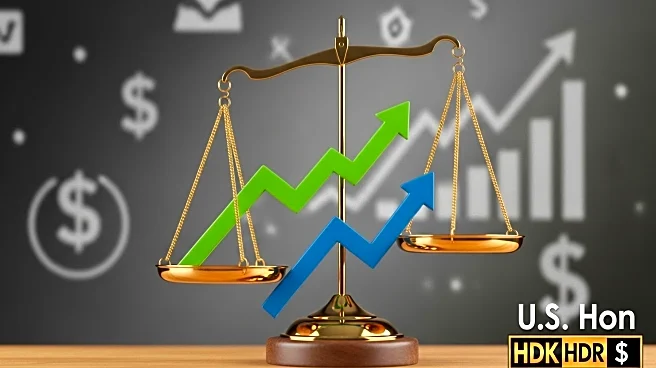What is the story about?
What's Happening?
The U.S. dollar has risen against major currencies such as the euro and yen, following the release of revised economic data showing a stronger-than-expected GDP growth rate of 3.8% for the second quarter. This data suggests a robust economic performance, which may influence the Federal Reserve's future interest rate decisions. The dollar index, which measures the U.S. currency against six peers, reached a two-week high. Despite recent rate cuts by the Fed, the dollar's strength indicates market expectations of limited further easing.
Why It's Important?
The strengthening of the U.S. dollar reflects investor confidence in the U.S. economy and suggests that the Federal Reserve may face challenges in implementing further rate cuts. A strong dollar can impact international trade by making U.S. exports more expensive and imports cheaper, potentially affecting domestic industries. The Fed's policy decisions will be closely watched as they balance economic growth with inflation control. The dollar's performance also influences global financial markets, affecting investment flows and currency valuations.
What's Next?
The Federal Reserve's upcoming meetings will be critical in determining the trajectory of interest rates. Policymakers will need to consider the implications of strong economic data and the dollar's performance on inflation and employment. Market participants are anticipating at least two more rate cuts this year, but these decisions will depend on future economic indicators. The Fed's approach to monetary policy will be pivotal in shaping economic expectations and maintaining stability.
AI Generated Content
Do you find this article useful?














